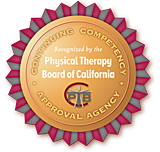
Learning The Method
MNRI® NeuroTactile, Primary Motor and Reflex Integration (Advanced)
MNRI® NeuroTactile, Primary Motor and Reflex Integration (Advanced)
- Describe the Masgutova Neurosensorimotor Reflex Integration (MNRI®) processes for activating the innate nature of the sensory-motor reflex.
- Explain the NeuroTactile integration processes and activation of sensory-motor reflex patterns to alleviate negative physical and psychological effects of stress.
- Explain the neurophysiological and psychological dynamics for the development of the tactile system.
- Describe why the brain engages in protection/survival versus learning and development.
- Describe the NeuroTactile strategy which optimizes the brainstem, relaxes the defensive reflexes, and opens the entire system for healthy cognitive, social, and motor development.
- Explain the process of skin and tactility development from time in utero and the origins of the nervous, cardiovascular, and immune systems.
- Describe the three layers of skin and how they affect the sensory processing and the development of the nervous system.
- Explain how this program regulates the functions of different receptors and dermatomes in the skin and why this is important for cognitive development.
- Describe how skin receptors affect the neurophysiological bases for the development of the reflex arcs and circuits.
- Explain how skin is the main organ for the sense of touch and how it is related to the healthy development of cognitive, social, emotional, and physical skills.
- Describe the connection between the deep sensibility system and proprioception with muscular system and motor control.
- Explain the neurophysiological functioning of the tactile system and its connection to the brain, spinal cord, and nerve network.
- Explain the Core flexion-extension mechanisms which correlate with the protection (freezing response -flexion) and survival (fight and flight - extension) strategies of the brain.
- Discuss how the HPA stress-axis and release of non-productive protection tendencies, optimizes the tactile sensation of the front and back of the body to maximize the primary motor coordination.
- Explain the Righting Reflex patterns (Stretch and Trunk Extension Reflex patterns) and its effects on learning.
- Explain the proper techniques of Rotational movements of limbs to create flexibility and the release of ligament guard response.
- Explain how homologous movements (to support bilateral links of the tactile system) serve for the Hands Pulling, Hands Grasp, and Hands Supporting reflex patterns and how it effects expressive language.
- Explain how homolateral movements support reflex patterns to activate one-sided motions,
- Describe how cross-lateral movements support reflex patterns activating movements crossing the body midline.
- Explain how primary tactility facilitates the neurodevelopmental mechanisms for productive learning of motor skills integration of the primary motor patterns to support positive cognitive development,
- Explain how the development of awareness of body processes and feelings of safety are necessary for interaction with the world, bonding with self and communicating with others.
- Explain how the release the non-productive protection tendencies on the somatic level, and to experience positive protection, regulate the HPA stress-axis work.
- Demonstrate through supervised hands-on exercises to implement MNRI® neuro-regulation techniques designed to assess, activate, and integrate challenged tactile systems: Greeting to Front and Sides of body, Arm and Leg segments, Rotations, Core, Head, and Back of Body.
- Describe how to create and apply an individual MNRI® program for clients with various neurodevelopmental deficits and learning challenges.
Time Agenda:
Day 1:
Hour 1- MNRI® process
Hour 2- NeuroTactile integration processes
Hour 3- Neurophysiological and psychological dynamics for the development of the tactile system
Hour 4- Protection/survival versus learning and development
Lunch 1 hour
Hour 5- NeuroTactile Strategy
Hour 6- Process of skin and tactility development
Hour 7- Layers of skin
Hour 8- Regulation the functions of different receptors and dermatomes in the skin
Day 2:
Hour 1- Skin receptors
Hour 2- Skin and development
Hour 3- Motor Control
Hour 4- Neurophysiological Functioning
Lunch 1 hour
Hour 5- Core flexion-extension
Hour 6- HPA stress-axis
Hour 7- Righting Reflex patterns
Hour 8- Rotational Movements
Day 3:
Hour 1- Homologous Movements
Hour 2- Homolateral Movements
Hour 3- Cross-Lateral Movements
Hour 4- Primary tactility
Lunch 1 hour
Hour 5- Body Awareness
Hour 6- HPA stress-axis
Hours 7-8 - Righting Reflex patterns




